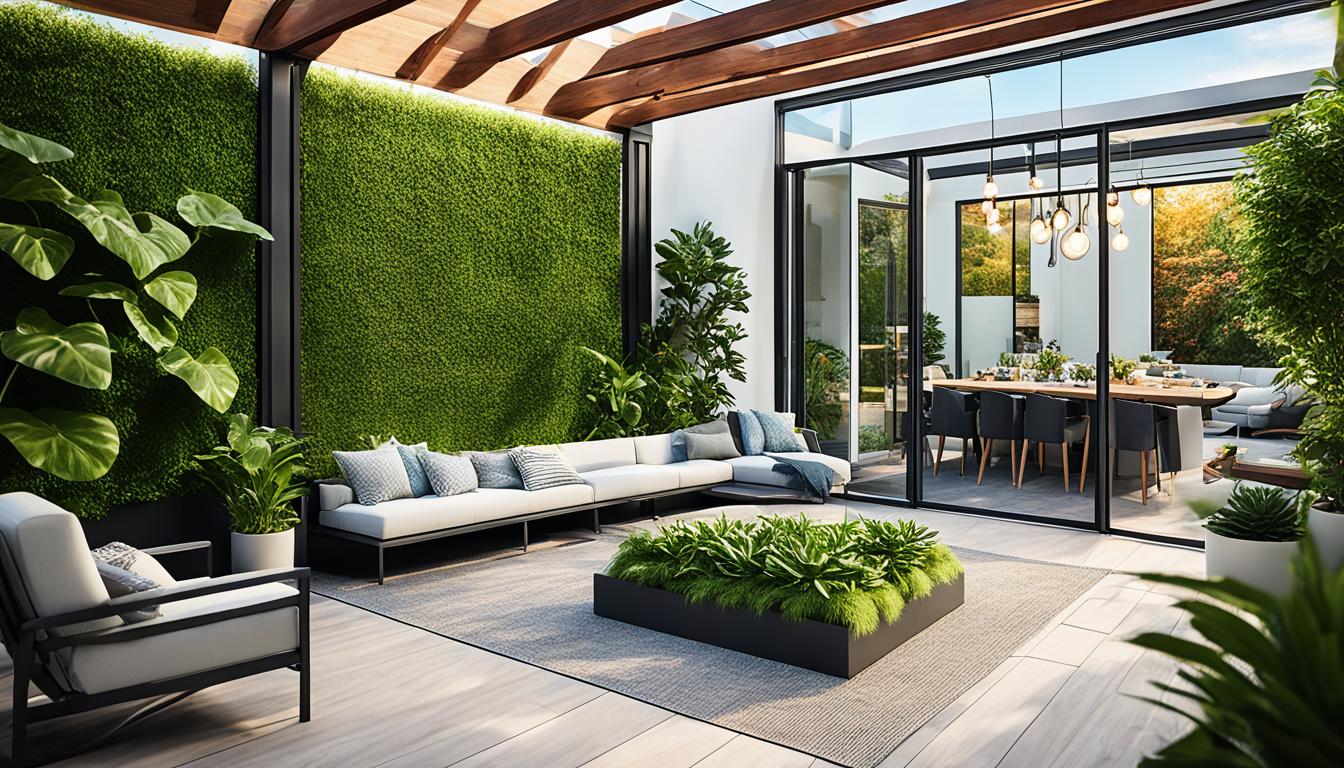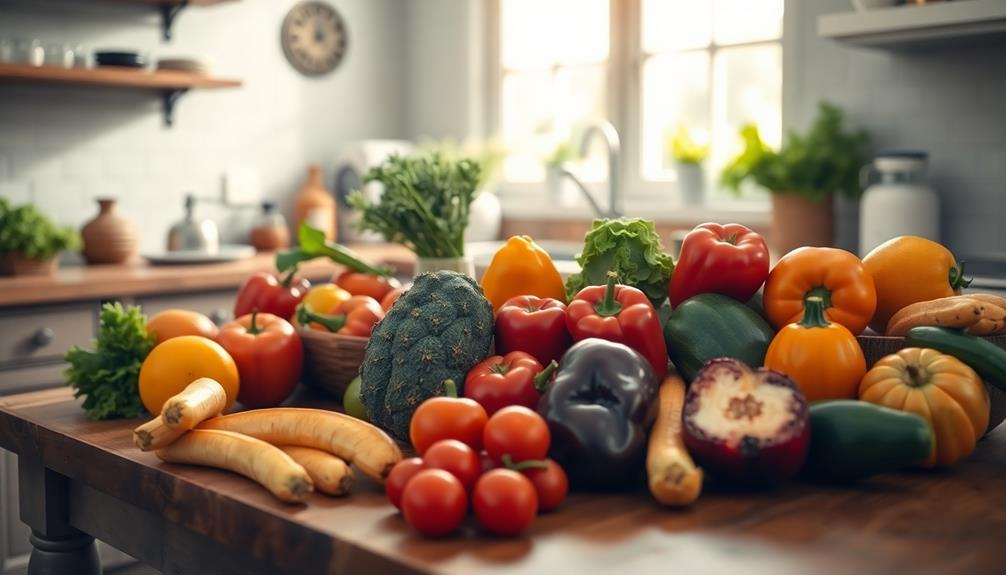The psychology behind food fads and trends reveals how social media, celebrity endorsements, and cultural influences shape your eating choices. When a dish goes viral, like the #ButterBoard, it taps into emotional connections and societal pressures. You may find yourself drawn to these trends, even if they're fleeting. Diet culture fuels this by prioritizing appearance over health, complicating your relationship with food. To navigate these patterns, it's essential to practice mindful eating and maintain a critical eye on what's popular. Understanding these influences helps you make informed choices for a healthier eating experience. There's much more to explore in this fascinating journey.
Key Takeaways
- Social media and celebrity endorsements significantly influence the popularity of food fads and trends, often leading to viral consumption spikes.
- Emotional connections and cultural traditions shape food choices, impacting both healthy and unhealthy eating behaviors.
- Mindful eating practices, such as savoring flavors and minimizing distractions, promote a healthier relationship with food.
- Nutrition education empowers individuals to make informed decisions, prioritizing balanced diets over fleeting food trends.
- Media literacy is essential for critically evaluating food marketing claims and discerning credible nutritional information from fads.
Understanding Food Fads and Trends
Why do certain food fads capture our attention while others fade away? It's often about the buzz surrounding them, driven by social media and celebrity endorsements.
Food fads can explode overnight, like the viral #ButterBoard, leading to a spike in butter consumption, even if it's short-lived. In contrast, dietary trends, such as plant-based diets and intermittent fasting, tend to reflect more sustainable changes in eating habits, shaped by research and data.
For instance, vegetarian options like Mushroom Masala have gained popularity not just for their flavor but also for their alignment with health trends.
These fads can greatly alter consumer behavior, making it vital for health professionals to step in. They provide balanced, evidence-based advice to help you navigate these dietary shifts.
With social media amplifying both trends and misinformation, it's important to develop media literacy. Understanding the difference between a fleeting food fad and a lasting dietary trend can empower you to make informed choices.
Ultimately, while food fads might tempt you with their novelty, it's the evidence-backed trends that can lead to healthier, long-term eating habits.
Stay curious, but also critical, as you explore the ever-evolving landscape of food trends.
Psychological Influences on Eating
Food fads often reflect deeper psychological influences that shape our eating habits. You mightn't realize it, but psychological factors, like cultural, social, and economic influences, greatly impact your dietary choices.
For example, the popularity of dishes like Red-Braised Pork Belly during festivals demonstrates how cultural traditions can drive food trends. Emotional connections to food can drive you to use it as a coping mechanism for stress or anxiety, making certain diet trends appealing during tough times.
Unfortunately, diet culture often prioritizes appearance over health, which can lead to unhealthy behaviors such as restrictive eating. This can foster disordered eating patterns and psychological distress.
To combat these negative influences, consider adopting cognitive-behavioral strategies, like self-monitoring and using positive self-statements. These methods can help you reshape your eating behaviors and counteract the effects of diet culture.
Mindful eating practices are another effective tool; by promoting awareness and presence during meals, you can build a healthier relationship with food. Instead of chasing fleeting trends, focus on what nourishes your body and mind.
The Role of Social Media
In recent years, social media has transformed how we discover and engage with food trends. Each scroll through your feed exposes you to visually stunning dishes and fads that can catch your eye and influence your next meal choice.
For instance, seasonal recipes like Graveyard Taco Dip can easily go viral during Halloween, showcasing how festive dishes captivate audiences. Influencers play a huge role in this process, often promoting specific diets or products that shape your perceptions and decisions.
Here's how social media drives food trends:
- Viral Content: A single post can propel a food item to fame overnight, making it the must-try meal of the week.
- Misinformation: Health claims spread quickly, leading many to adopt fad diets with little scientific backing.
- Aesthetic Appeal: Platforms like Instagram prioritize visually appealing food, often overshadowing nutritional value.
- Community Engagement: Shared experiences and recommendations among users create a buzz that fuels the longevity of trends.
As you engage with these platforms, remember that the allure of food fads can sometimes mask critical nutritional information.
Social media certainly amplifies the excitement around food trends, but it's crucial to approach these fads with a discerning eye.
Impact of Diet Culture
The influence of social media on food trends intertwines with the pervasive impact of diet culture, which shapes how we perceive ourselves and our eating habits. You might find yourself caught in a cycle where thinness is equated with health and personal worth. This mindset can lead to restrictive eating and even disordered eating patterns, as you endeavor to fit into idealized body types often glorified online.
Additionally, the rise of various food trends, such as the popularity of dishes like Caldeirada or Brigadeiro, can create pressure to conform to specific culinary interests, further complicating our relationship with food.
Diet culture fuels a fear of certain foods, making you anxious about what you eat. This anxiety often breeds unhealthy relationships with food, where guilt accompanies every indulgence. Research shows that focusing on body image within diet culture greatly correlates with psychological distress and the prevalence of eating disorders.
Moreover, the constant promotion of quick fixes and fad diets can lead to yo-yo dieting, which not only harms your metabolic health but also diminishes your self-esteem. As societal pressures mount, you may resort to extreme measures to meet unrealistic beauty standards.
Ultimately, breaking free from this cycle is vital for fostering a positive relationship with food and your body.
Mindful Eating Practices
Mindful eating transforms your relationship with meals by encouraging you to be fully present during each bite. This practice helps you tune into your body's hunger and fullness cues, which reduces compulsive eating and supports healthier choices.
By engaging fully with your food, you can appreciate flavors and textures, leading to a more satisfying experience. For instance, savoring dishes like Nettle and Potato Soup can heighten your awareness of seasonal ingredients and their health benefits.
Here are four key techniques to enhance your mindful eating journey:
- Savor each bite – Take your time to chew slowly, allowing the flavors to unfold and deepen your appreciation.
- Minimize distractions – Turn off screens and focus on the meal in front of you, creating a calm atmosphere that promotes awareness.
- Reflect on sensory experiences – Notice the aromas, colors, and textures of your food, which can enrich your eating experience.
- Practice moderation – Instead of restricting, listen to your body's signals to help foster a healthier relationship with food.
Incorporating these mindful eating practices can help you appreciate each meal without guilt or anxiety, ultimately leading to lasting changes in your dietary choices.
Strategies for Sustainable Choices
To make sustainable food choices, start by practicing mindful eating, which helps you tune into your hunger cues and emotional triggers.
Incorporating traditional dishes like Chilaquiles can enhance your culinary experience while using leftover ingredients effectively.
Educating yourself about nutrition can empower you to choose balanced meals over fleeting fads.
Mindful Eating Practices
While steering through the complexities of modern eating habits, embracing mindful eating practices can transform your relationship with food. This approach encourages you to focus on the sensory experience of each meal, helping you recognize your hunger cues and satisfaction levels.
Incorporating seasonal dishes, such as a comforting Turkey Soup made from leftovers, can enhance your enjoyment and appreciation of food. By doing so, you can break free from the cycle of food fads and restrictive diets.
Here are four strategies to enhance your mindful eating experience:
- Slow Down: Take your time with each bite, allowing flavors and textures to unfold.
- Savor Each Bite: Pay attention to the experience; note how the food feels and tastes.
- Tune into Your Body: Listen to your body's signals to determine when you're hungry or full.
- Limit Distractions: Set aside your phone and TV during meals to fully engage with your food.
Practicing mindful eating not only leads to healthier choices but also fosters a positive relationship with food.
Educating on Nutrition Choices
Recognizing the importance of informed decisions can greatly enhance your approach to nutrition choices. To make sustainable choices, it's crucial to differentiate between fleeting food fads and lasting dietary trends. Health professionals can offer evidence-based information, guiding you toward healthier eating habits rather than restrictive diets.
For instance, incorporating traditional Japanese dishes like Dorayaki (Red Bean Pancake) can provide a delicious yet balanced way to satisfy your sweet tooth while enjoying cultural flavors.
Mindful eating practices can also foster a positive relationship with food. By being aware of your dietary choices and the psychological triggers behind them, you can make more thoughtful decisions. Focus on balanced diets rich in whole foods—fruits, vegetables, whole grains, and lean proteins—rather than getting swayed by misleading claims of fad diets.
The Mediterranean Diet is an excellent example of a sustainable approach to eating, promoting weight loss while emphasizing the enjoyment of flavorful, nutritious foods. Additionally, consider the environmental impact of your food choices. Aligning your personal health goals with ecological responsibility can lead to more informed decisions.
Lastly, developing media literacy skills will empower you to critically evaluate food marketing claims, helping you discern credible nutritional information from transient food trends. Making these informed choices can pave the way for a healthier, more sustainable lifestyle.
Frequently Asked Questions
What Is the Food Theory in Psychology?
Food theory in psychology explores how your emotions, thoughts, and social influences shape your eating habits. It emphasizes understanding these connections to develop healthier relationships with food and improve your overall well-being and dietary choices.
What Is the Difference Between Food Trends and Fads?
You'll find food trends are like steady rivers, flowing with lasting changes, while fads are fleeting sparks, igniting excitement but fading quickly. Trends shape diets over time; fads vanish as swiftly as they appear.
What Psychological Factors Influence Food?
Psychological factors like self-perception and societal pressures influence your food choices. You might feel compelled to follow trends for acceptance or comfort, while emotional eating can lead you to seek control during stressful times.
What Is the Psychological Approach to Food?
The psychological approach to food focuses on understanding your emotions, behaviors, and relationships with food. By examining your motivations and practicing mindfulness, you can cultivate healthier eating habits and improve your overall well-being.
Conclusion
In a world where food trends come and go faster than a TikTok dance, it's crucial to recognize the psychology behind your choices. By understanding the influences of diet culture and social media, you can make more mindful decisions. Embracing sustainable eating habits not only benefits your well-being but also supports the planet. So, ditch the fleeting fads and focus on what truly matters—nourishing your body while savoring each bite, just like your great-grandparents did.









